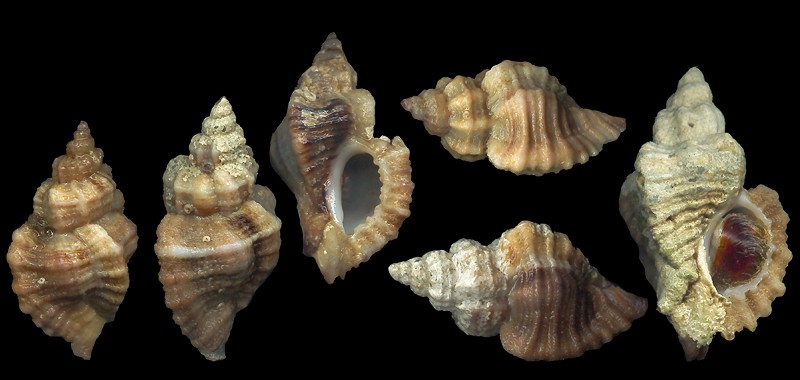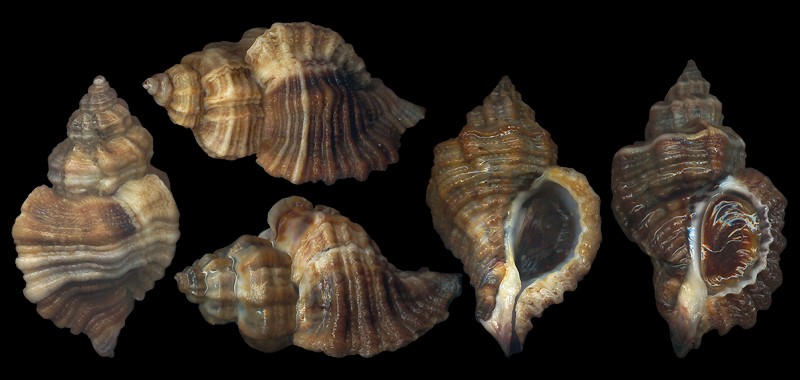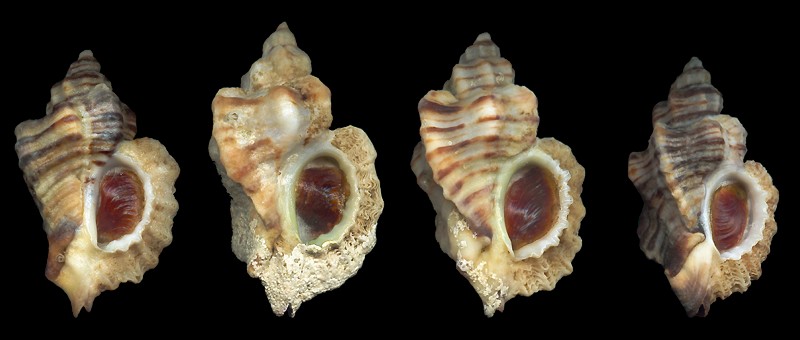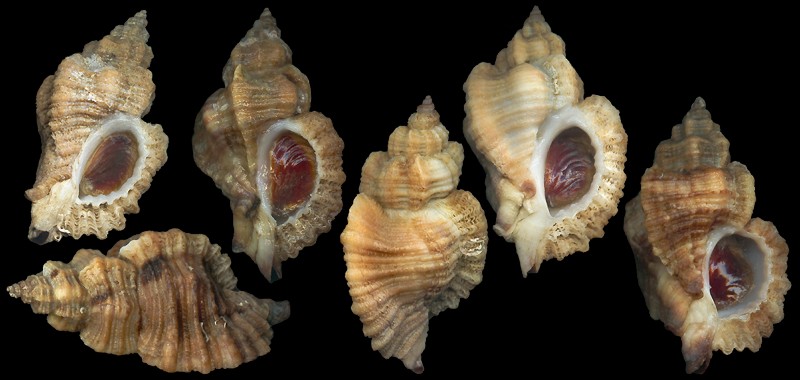 [Summary] [Summary] |
Ocenebra erinaceus (Linnaeus, 1758) |
 |
 Spot 02: at low tide on rocks and at the foot of wall, la Jalousie pool, off Sainte-Marie, Ré island. 28-34mm. Shells are slender, sometimes banded, high-spired, more brown than sandy-coloured, with minute scales. |
 |
 Spot 03: at low tide, in stones and pebbles along the road to Le Platin oyster parks, Rivedoux, Ré island. 40-46mm. Shells are larger, rounder, often banded, and darker coloured than in spot 02. The varices are less pronounced. |
 |
 Spot 08: at low tide, in pools and under stones, Les Vincentes, L'Écuissière, Dolus, Oléron island. 32-35mm. Shells are smaller, with dark spiral cords on a pale background. Varices and labial wings are well developped. |
 |
 Spot 15: at
low tide, under the surface, on rocks, near the eggs, Le Jeamblet reef,
Aix island. 39-42mm. Spot 15: at
low tide, under the surface, on rocks, near the eggs, Le Jeamblet reef,
Aix island. 39-42mm.
Shells are sandy-coloured; the scaly sculpture appears between the spiral cords; no bands. |
|
 Each
group shows subtle differences in the way some characters are displayed:
shape, sculpture, colours and scales build an average-type that is clearly
not the same from a spot to an other. If the little shells from Ste-Marie
(circle 1) are typical of rocky shores exposed to waves, those from Rivedoux
(circle 2) develop some features that I never met elsewhere; maybe it's
the "oyster-park design" in quiet waters. The specimens from
Le Jeamblet look perfectly normal (circle 4), but the little beasties
from Les Vincentes (circle 3), with their funny convict-pattern, even
if they live in the same wavy conditions than those from Ste-Marie, are
totally different: for example, their varices are thin, like little razors,
and not rounded.
 It has often been noticed
that Pteropurpura inornata (Récluz, 1851) cannot escape
the oyster & mussel parks; this may signify our little native Drill will
continue to reign on european coasts, without suffering any pressure from
its new competitor. |
 The end... The end... |



